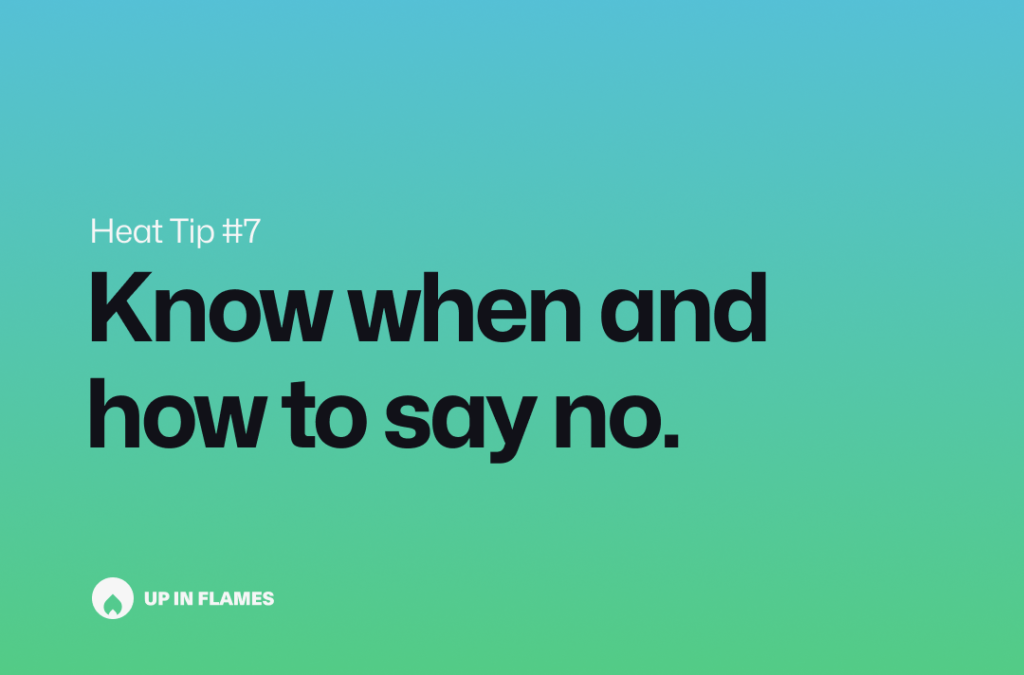Saying “no” isn’t just about rejecting requests; it’s an essential skill in your professional toolkit that, when used wisely, can maintain focus and drive efficiency. This entry explores how to say no effectively, ensuring it’s done professionally and constructively.

The Importance of Saying No
Knowing when and how to say no is crucial in the often overflowing bucket of project demands. It helps manage your workload, protects the goal, and prevents scope creep. But it’s not just about refusing requests—it’s about maintaining boundaries respectfully and strategically.
Setting Clear Boundaries
Before effectively saying no, ensure you have clearly defined roles and responsibilities in your project and team. This clarity helps everyone understand what falls within their purview and what does not. It sets the stage for justified no’s necessary to keep the project on track. Ensure you set up a framework for roles and responsibilities at the onset of your project. Leverage a Project Initiation Document or similar format to align on this before starting the work.
When to Say No
- Out of Scope: If a request falls outside the agreed-upon project scope, it’s acceptable to decline.
- Out of Role: If the request falls under the role of another team member, such as writing Technical Documentation as a Project Manager.
- Resource Constraints: When there’s a lack of resources—time, team members, budget—it may be necessary to refuse additional tasks to maintain project quality.
- Prioritization Conflicts: If a new request conflicts with higher-priority tasks, saying no might be essential to focus on what truly matters.
How to Say No
The key to saying no effectively is in the delivery. Here’s how to do it constructively:
- Be Direct but Polite: Clearly explain why you are saying no. Ensure the reasoning is objective and relates to project priorities or resources.
- Offer Alternatives: Suggest an alternative solution or compromise. For example, “I can’t do this now, but I can schedule it for next week.”, or “I can’t help you with this, but this other person might be able to.”
- Educate: Use this as an opportunity to clarify role responsibilities or project scope. It helps prevent similar issues in the future.
- Follow-Up: If appropriate, check back to see if a suitable resolution was found. It shows that, while you said no, you still care about the issue.
Example of Saying No Constructively
Consider the scenario where a team member says, “This is just 5 minutes of work, but it’s not in my scope, so I’m not doing it.” This approach can appear unhelpful or petty. A better response might be, “I’ve taken care of it this time, but let’s clarify whose responsibility this should be going forward to ensure we’re all clear on our roles.”
Conclusion
Mastering the art of saying no is not just about refusing requests but doing so in a way that respects your time and that of your colleagues maintains project integrity and fosters a positive team environment. It’s about strategic decision-making that prioritizes the project’s success over the simplicity of surrender. Always aim to say no in a way that builds understanding and opens the door for effective collaboration in the future.

